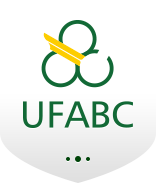Banca de QUALIFICAÇÃO: VINÍCIUS SANTANA DA SILVA
Uma banca de QUALIFICAÇÃO de DOUTORADO foi cadastrada pelo programa.STUDENT : VINÍCIUS SANTANA DA SILVA
DATE: 01/12/2022
TIME: 14:00
LOCAL: https://meet.google.com/goa-eydz-bkf
TITLE:
RF Energy Harvesting integrated with Wake-up Receiver: Strategies for Self-Powered Communication
PAGES: 80
BIG AREA: Engenharias
AREA: Engenharia Elétrica
SUBÁREA: Telecomunicações
SPECIALTY: Teoria Eletromagnetica, Microondas, Propagação de Ondas, Antenas
SUMMARY:
RF (radio frequency) energy harvesting techniques are becoming a promising alternative for powering low power systems in wireless sensor networks. However, in many of these devices, the main energy consumer is precisely the communication block. So, some strategies emerge to increase the energy efficiency of this block. One of these strategies is to hibernate the Main Radio (MR) during the idle periods, while a ultra-low power radio module is always operating, waiting for a signal to "wake up" the MR when requested. This low-power radio module, the Wake-up Receiver, presents a consumption profile compatible with the power generated in RF energy harvesting, which endorses the integration of these two techniques. Therefore, this project aims to develop a self-powered communication system through the combination of RF energy harvesting and the Wake-up Radio strategies, both operating in the 900 MHz ISM band and MR operating in the 2.4 GHz ISM band. The tests will be performed using an SDR device as the base station, while the nodes will be designed using discrete elements. The prototypes will be measured in controlled environments for the validation of studies and simulations. Thus, the project has challenges related to the optimization of each system building block, as well as the integration between them.
BANKING MEMBERS:
Presidente - Interno ao Programa - 1762419 - CARLOS EDUARDO CAPOVILLA
Membro Titular - Examinador(a) Interno ao Programa - 1936002 - ANDERSON LEONARDO SANCHES
Membro Titular - Examinador(a) Externo à Instituição - CRISTIANO AKAMINE - UPM
Membro Suplente - Examinador(a) Interno ao Programa - 1761107 - RICARDO SUYAMA




